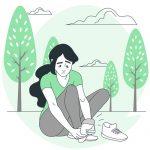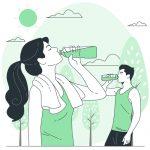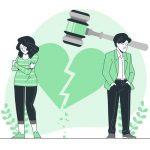
Jumpstart
Back pain is a common issue among women. From aching necks to aching lower backs, female back pain can have a significant effect on your daily activities. Whether you’re a stay-at-home mom, a busy professional, or a student, the causes of female back pain need to be addressed. In this blog post, we’ll discuss the causes of female back pain, treatment options, and ways to prevent it from recurring. We’ll also provide helpful advice and useful information to help you take control of your back pain and live a happier, healthier life.
What is Back Pain and its Prevalence in Women?
Female back pain causes discomfort or soreness in the back area, typically in the lower part. Back pain can be mild or severe and can last from a few days to several months, causing significant distress to the sufferer. Unfortunately, it’s a common issue among women, with studies showing that around 80% of females experience back pain at some point in their lives. Causes of female back pain can range from poor posture to heavy lifting and even stress.
The good news is that there are plenty of ways to prevent Female Back Pain. Simple lifestyle changes, such as exercising regularly, maintaining good posture, and stretching daily, can help to reduce the risk of developing back pain.
Remember, prevention is key! By staying active, practicing good posture, and taking care of your spine, you can help to keep Female Back Pain at bay. So, ladies, don’t let back pain hold you back! Take care of your body and stay healthy.
Interesting Facts About Female Back Pain
- Did you know that female back pain is more common than male back pain? In fact, studies show that women are more likely to experience chronic back pain.
- The most common causes of female back pain are poor posture, pregnancy, and obesity.
- Stress and emotional tension can also contribute to female back pain, as they cause muscle tension and spasms.
- Surprisingly, high heels can also lead to female back pain. This is because wearing heels puts strain on the lower back and alters the body’s center of gravity.
- Yoga and other forms of exercise can actually help prevent female back pain by strengthening the muscles that support the spine.
- Poor sleep habits, such as sleeping on your stomach or using a mattress that is too soft or too firm, can also contribute to female back pain.
- Sitting for long periods of time, especially in a chair that does not provide proper lumbar support, is a major contributor to female back pain. Be sure to take frequent breaks and stretch your muscles throughout the day.
- Taking proactive steps to prevent female back pain, such as maintaining a healthy weight, practicing good posture, and exercising regularly, can significantly improve your quality of life.
What causes female back pain?
Female back pain is a common ailment experienced by millions of women around the world. The causes of female back pain can vary from person to person. There are several possible reasons why women experience back pain. Some of the common causes are:
- Poor posture: When we spend too much time sitting or standing with incorrect posture, our spine and muscles can become strained, leading to pain.
- Heavy lifting: Lifting heavy objects can strain the back muscles and cause injury.
- Obesity: Carrying extra weight can put extra pressure on the spine, leading to back pain.
- Weak core muscles: The core muscles are responsible for supporting the spine, so if they are weak, it can result in back pain.
- Pregnancy: During pregnancy, the body undergoes a lot of changes, including weight gain, which can lead to back pain.
- Menstrual cycles: Hormonal changes during the menstrual cycle can cause inflammation and pain in the back muscles.
- Menopause: As women approach menopause, they may experience changes in bone density and muscle mass, which can lead to back pain.
Furthermore, the female back pain causes can be broadly categorized into two main groups: musculoskeletal and non-musculoskeletal causes.
Musculoskeletal causes of female back pain are those that affect the muscles, bones, and joints of the back. These can include poor posture, injury, muscle strain, herniated discs, spinal stenosis, and osteoarthritis. In addition, hormonal changes that occur during pregnancy, menstruation, and menopause can also cause back pain.
Non-musculoskeletal causes of female back pain include conditions that affect other organs in the body, such as kidney stones, endometriosis, and uterine fibroids. Other potential causes can include cancer, infections, and autoimmune disorders.
Overall, the causes of female back pain are complex and varied. However, by understanding the common causes and taking steps to prevent back pain, women can reduce their risk and maintain a healthy and active lifestyle. If you are experiencing back pain, it is important to talk to your healthcare provider to determine the best course of treatment for your individual needs.
Types of Female Back Pain
There are several different types of female back pain, each with its own unique causes and symptoms. Here are some of the most common:
1.Muscular back pain
This type of back pain is caused by strain or injury to the muscles and ligaments in the back. It often feels like a dull ache or stiffness, and can be caused by activities like heavy lifting, poor posture, or a lack of exercise.
2.Sciatica
Sciatica is a type of back pain that is caused by pressure on the sciatic nerve, which runs from the lower back down to the legs. It can cause sharp pain or a burning sensation in the lower back, hips, and legs, and is often worsened by sitting or standing for long periods of time.
3.Herniated disc
A herniated disc is a type of back pain that occurs when one of the discs between the vertebrae in the spine bulges or ruptures. This can put pressure on the nerves in the spine, causing pain and numbness in the back and legs.
4.Osteoporosis
Osteoporosis is a condition in which the bones become weak and brittle, making them more susceptible to fractures. It can cause back pain and curvature of the spine, especially in older women.
5.Scoliosis
Scoliosis is a condition in which the spine curves to the side, causing uneven shoulders and hips. It can cause back pain and stiffness, and may require bracing or surgery to correct.
No matter what type of back pain you’re experiencing, there are steps you can take to alleviate your symptoms and prevent further damage. By understanding the different causes and types of female back pain, you can take control of your health and enjoy a pain-free life. So don’t let back pain hold you back, take action today to find relief and live your best life.
How to Diagnose Female Back Pain?
When experiencing Female Back Pain: Causes, it’s important to identify the root cause of the pain. To diagnose the problem, it’s best to schedule an appointment with a doctor. They can perform a physical exam and run any necessary tests such as X-rays, MRIs, or CT scans. In some cases, a specialist may be needed, such as a chiropractor or physical therapist. Accurately diagnosing the cause of the pain is the first step towards finding an effective treatment plan.
Treatment Options for Female Back Pain
As a woman, you may experience back pain at some point in your life. The good news is that there are several treatment options available to help relieve your discomfort. Here are some common treatments for female back pain:
1. Medications
Over-the-counter pain relievers, such as ibuprofen and acetaminophen, can help reduce inflammation and relieve pain. Your doctor may also prescribe stronger medications if your pain is severe.
2. Physical Therapy
Physical therapy can help relieve back pain by strengthening your muscles and improving your posture. A physical therapist can also teach you exercises to do at home.
3. Chiropractic Care
Chiropractic care involves using manual adjustments to relieve back pain. A chiropractor can also provide massage and other therapies to help ease your discomfort.
4. Acupuncture
Acupuncture involves inserting tiny needles into specific points on your body to help relieve pain. Many women find this alternative therapy helpful for back pain.
5. Surgery
In rare cases, surgery may be necessary to relieve severe back pain. Your doctor will discuss this option with you if it is necessary.
Regardless of which treatment option you choose, it is important to consult with your doctor before beginning any new treatment. With the right treatment, you can overcome your back pain and get back to doing the things you love.
Prevention Tips for Female Back Pain
We know that prevention is better than cure. So, here are some simple but effective ways to prevent female back pain:
1. Keep Moving
Sitting for prolonged periods puts excessive pressure on your spine and can cause back pain. If you have a desk job, take a break every 30 minutes, stand up, stretch your arms and legs, and walk around for a few minutes. Similarly, if you have a job that requires you to stand all day, take breaks to sit down and rest your back.
2. Maintain Proper Posture
Your posture can play a big role in preventing back pain. Whether you are sitting or standing, keep your shoulders relaxed, your chin parallel to the ground, and your ears aligned with your shoulders. Also, avoid slouching or hunching over your computer or phone screen.
3. Exercise Regularly
Regular exercise can strengthen your core muscles, which support your back and spine. Engage in activities like walking, jogging, swimming, yoga, or pilates that help stretch and strengthen your back muscles.
4. Lift Objects Correctly
Whenever you need to lift heavy objects, make sure you use proper lifting techniques. Bend your knees, keep your back straight, and lift with your legs instead of your back.
5. Manage Your Weight
Excess weight puts more pressure on your spine and can cause back pain. Maintaining a healthy weight through a balanced diet and regular exercise can help prevent back pain.
6. Wear Comfortable Shoes
Wearing high heels or shoes that do not provide proper support can put a strain on your back muscles. Choose comfortable shoes that provide good arch support and cushioning.
7. Manage Stress
Stress can cause muscle tension, which can lead to back pain. Practice stress-reducing techniques like meditation, deep breathing, or yoga to help relax your muscles and prevent back pain.
By following these simple prevention tips, you can help reduce your risk of developing female back pain and enjoy a healthy and pain-free life.
Pregnancy and Back Pain: Causes, Treatment, and Prevention
Pregnancy is an exciting time for expectant mothers, but it can also bring along a host of challenges, including female back pain. Approximately 50-70% of pregnant women experience back pain, making it a common issue. So, what causes this discomfort, and how can you alleviate it?
As your body prepares for childbirth, several factors can contribute to back pain. One of the primary causes is weight gain. During pregnancy, women typically gain between 25-35 pounds, which places additional pressure on the spine. Hormonal changes can also contribute to pain. The hormone relaxin softens ligaments and joints in preparation for birth, but this can also cause instability and discomfort in the back. Finally, postural changes may also be to blame. As your baby grows, your center of gravity shifts, which can cause you to slouch and strain your back muscles.
There are several ways to treat female back pain during pregnancy. For mild cases, regular exercise such as yoga, swimming, or walking can help strengthen your back muscles and reduce pain. Massage therapy or chiropractic adjustments can also help alleviate discomfort. Applying heat or cold compresses to the affected area can also provide relief.
Preventing back pain during pregnancy is possible. Practicing good posture, wearing supportive shoes, and using pillows to support your belly while sleeping can all help reduce strain on your back. Additionally, avoiding standing or sitting for extended periods can help alleviate pressure.
It’s essential to speak with your healthcare provider if you’re experiencing severe back pain during pregnancy. In some cases, medications may be prescribed, but it’s essential to follow your provider’s guidance to ensure both you and your baby’s safety.
Overall, female back pain during pregnancy is common but manageable. With the right treatment and preventative measures, you can stay comfortable throughout your pregnancy and enjoy this special time with minimal discomfort.
Menstrual Cycles and Back Pain: How Hormones Affect Pain Levels
Many women experience an increase in back pain during their menstrual cycle. This is due to the fluctuation of hormones, particularly estrogen and progesterone, which can cause inflammation and muscle tension.
Estrogen is known to affect pain receptors, making them more sensitive, while progesterone can cause muscle relaxation and looseness, which can put extra strain on the lower back. The combination of these hormonal changes can lead to more severe back pain during a woman’s period.
In addition to these hormonal factors, the physical changes that occur during menstruation can also contribute to back pain. The uterus may contract more forcefully during a period, causing pressure on the lower back and increasing discomfort.
To alleviate menstrual-related back pain, over-the-counter pain relievers, heat therapy, and gentle stretching may be effective. Staying active and maintaining good posture can also help reduce discomfort.
For women experiencing chronic menstrual-related back pain, hormonal birth control or other hormonal therapies may be recommended. Consult with your healthcare provider to determine the best treatment plan for your individual needs.
By understanding how hormones affect back pain during the menstrual cycle, women can take proactive steps to manage their discomfort and maintain their overall health and well-being. Remember, proper self-care and medical attention can make all the difference in treating female back pain causes.
Menopause and Back Pain: Causes, Symptoms, and Treatments
Menopause can be a challenging time for many women, as their bodies undergo significant hormonal changes. These changes can lead to various physical symptoms, including back pain. In this section, we will discuss the causes, symptoms, and treatments of back pain during menopause.
During menopause, the body produces less estrogen and progesterone, which can affect the bones and muscles that support the spine. This can lead to conditions such as osteoporosis and osteoarthritis, which can cause back pain. Additionally, the changes in hormones can cause muscle tension and stiffness, leading to discomfort.
Back pain during menopause can vary in intensity and duration. Women may experience a dull ache or sharp pain, which can radiate to other parts of the body. They may also experience stiffness or muscle tension, making it challenging to move around. In some cases, the pain may be so severe that it affects daily activities, such as standing or walking.
Treatment options for back pain during menopause depend on the severity and underlying cause of the pain. Women should always consult with their healthcare provider to develop an individualized treatment plan. Treatment options may include pain relievers, hormone replacement therapy, physical therapy, or chiropractic care. In some cases, surgery may be necessary.
In addition to medical treatments, women can also make lifestyle changes to help alleviate back pain during menopause. These changes may include exercising regularly, maintaining a healthy weight, practicing good posture, and avoiding prolonged periods of sitting or standing.
Menopause can be a challenging time for women, and back pain is just one of many symptoms they may experience. Understanding the causes, symptoms, and treatment options for back pain during menopause can help women better manage their symptoms and improve their quality of life. As always, women should consult with their healthcare provider for personalized treatment recommendations.
Follow-Up
After reading about the various causes, treatments, and prevention tips for female back pain, you may be wondering what the next steps are. If you are experiencing ongoing back pain, it’s important to consult with a healthcare professional to determine the underlying cause and receive proper treatment.
If your back pain is caused by poor posture or sedentary lifestyle, it’s important to make changes to your daily habits. Incorporating exercise, stretching, and taking breaks from sitting can all help alleviate back pain.
In addition, paying attention to your menstrual cycles, pregnancy, and menopausal symptoms can also play a role in back pain. Be mindful of any changes in pain levels during these times and discuss them with your healthcare provider.
Remember that prevention is key. Maintaining a healthy weight, practicing good posture, and incorporating exercise into your routine can all help prevent future episodes of female back pain. Don’t ignore any discomfort in your back, and take action to address it before it becomes chronic.
With proper care and attention, female back pain can be managed and treated effectively. Stay informed, stay proactive, and take steps to prioritize your back health.
Call-to-action
If you’re experiencing female back pain, don’t hesitate to take action. It’s important to seek help and treatment to prevent further damage and discomfort. Our experts and specialists at Yarabel are here to support you on your journey to a pain-free life. Book a free consultation with us today by calling +1 (332) 333-1900 or emailing us at [email protected]. Don’t suffer in silence any longer, take control of your back pain and let us help you find the relief you deserve. Don’t let back pain keep you from living your best life!
FAQ: Female Back Pain: Causes, Treatment, and Prevention
The most common causes of female back pain are poor posture, lifting heavy objects improperly, spinal abnormalities, and injuries from accidents or falls.
Yes, hormonal changes during menstrual cycles, pregnancy, and menopause can cause back pain in women.
Yes, lifestyle factors such as lack of exercise, obesity, smoking, and stress can all contribute to female back pain.
Yes, emotional stress can cause tension in the muscles and lead to back pain in women.
Yes, wearing high heels can cause strain on the lower back and lead to back pain in women.
It’s important to practice good posture, wear supportive shoes, and avoid lifting heavy objects while pregnant to prevent back pain.
Treatment options include physical therapy, medication, hot or cold compresses, and surgery in severe cases.
Yes, massage therapy can help reduce muscle tension and improve circulation to alleviate back pain in women.
Yes, practicing good posture, exercising regularly, maintaining a healthy weight, and avoiding prolonged periods of sitting or standing can all help prevent female back pain.
You should see a doctor if your back pain is severe, lasts longer than a week, is accompanied by other symptoms like numbness or tingling, or if it’s affecting your daily activities.



















